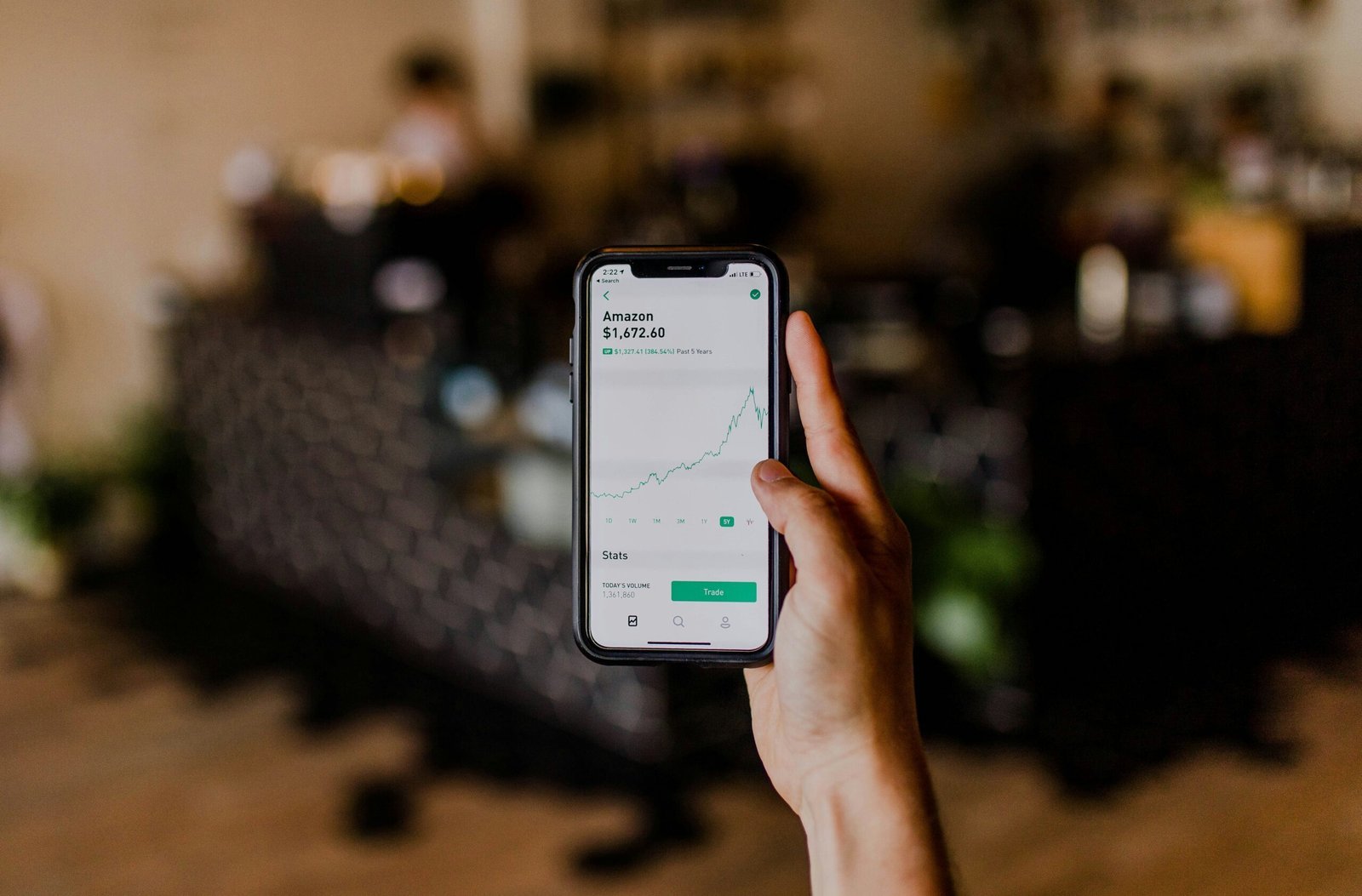
Introduction: Entering the World of Day Trading
In my early twenties, I found myself immersed in the high-stakes environment of day trading, navigating the volatile stock market with the curiosity and ambition that only youth can bring. My days were already packed with the rigorous demands of being a student in the emergency medical field, coupled with the relentless pace of working for a local ambulance service. Despite this hectic schedule, I was drawn to the financial markets, fascinated by the potential for rapid gains and the allure of mastering the complexities of stock trading.
However, enthusiasm alone didn’t account for the steep learning curve ahead. As someone new to the stock market, I lacked the foundational knowledge and understanding that seasoned traders possessed. The stock tickers, market trends, and financial statements were all a foreign language to me. Yet, my determination to grasp the intricacies of day trading was undeterred. I spent countless nights poring over financial news, watching online tutorials, and experimenting with small trades, attempting to translate theory into practice.
My initial foray into day trading was a whirlwind of trial and error, making rookie mistakes and occasionally striking luck with a profitable trade. The environment around me was one of controlled chaos, between ambulance calls and the pressures of my coursework, but I found a peculiar sense of balance in my dual roles. Day trading offered a different kind of adrenaline rush; unlike the unpredictable nature of emergency services, it required a calculated approach, strategic thinking, and a keen understanding of market behavior.
As I progressed in juggling these demanding aspects of my life, I learned invaluable lessons about risk management, the importance of continuous education, and the resilience needed to weather financial losses. This journey of blending my unconventional background with the structured world of stock trading laid the groundwork for my growth as a day trader, setting the stage for the insights and experiences I am privileged to share.
The Learning Curve: Embracing the Unknown

The initial phase of my journey into day trading was marked by a steep learning curve. Unfamiliar with the intricacies of the market, I often found myself making decisions that were more hopeful guesses than informed strategies. My father, a local business leader and long term investor, frequently reminded me that I was ‘still wet behind the ears.’ His words were a stark reminder of my inexperience, a truth I had to face daily as I navigated the complex world of trading.
One of the most illustrative moments of my early days was an impulsive investment based on a hot tip. The stock seemed promising, and I invested heavily, only to see its value plummet within hours. It was a harsh lesson in the volatility of the market and the importance of due diligence. This experience taught me that day trading is not just about following trends but understanding the underlying factors that drive those trends.
Another significant challenge was the emotional rollercoaster that came with trading. The highs of successful trades were quickly overshadowed by the lows of unexpected losses. It took time to develop the emotional resilience necessary to handle these fluctuations. My father would often remind me that the market is not a game of chance but a test of patience and discipline.
These early experiences, though challenging, were instrumental in shaping my understanding of day trading. They underscored the need for continuous learning and adaptation, qualities that are essential for anyone looking to succeed in this field. Embracing the unknown was not merely about gaining technical knowledge but also about developing the mental fortitude to withstand the inevitable ups and downs of the market.
In retrospect, these moments of struggle and reflection laid the foundation for my growth as a trader. While the learning curve was undeniably steep, each challenge provided invaluable insights that have guided my journey ever since. The lessons learned during those early days have become the pillars on which I have built my day trading strategies, underscoring the importance of perseverance, continuous learning, and emotional stability.
Mistakes Made and Lessons Learned

In the early days of my journey as a young day trader, my enthusiasm and ambition often clouded my judgment, leading to several notable mistakes. One of the most recurring errors was my overreliance on technical analysis without fully understanding its nuances. I frequently misinterpreted chart patterns and relied heavily on indicators without corroborating them with other forms of analysis, resulting in misjudged entry and exit points. This experience underscored the importance of a well-rounded approach, combining technical analysis with fundamental analysis and market sentiment.
Another significant mistake was my emotional decision-making. The thrill of seeing rapid gains and the anguish of sudden losses often swayed my trading decisions. I found myself chasing the market, buying high during euphoric runs, and selling low in moments of panic. It became evident that emotional responses could severely undermine rational decision-making. To mitigate this, I started to incorporate stringent risk management practices, such as setting predetermined stop-loss levels and maintaining a balanced portfolio.
Additionally, my initial lack of a solid trading plan was a critical shortcoming. In my eagerness, I often jumped into trades based on hunches or incomplete analysis, leading to inconsistent results. Developing a comprehensive trading plan, including clear objectives, entry and exit rules, and defined risk/reward ratios, significantly improved my consistency and discipline.
These experiences have underscored the necessity of continuous learning and adaptation in day trading. Each mistake, while costly at the moment, was a valuable lesson that contributed to refining my strategies. By documenting and analyzing trading errors, I’ve developed a more robust, psychologically resilient approach, less prone to the whims of market emotions and misjudged technical signals. The journey has not been without its challenges, but each lesson learned has been a step towards becoming a more proficient and disciplined trader.
The Cost of Education: Financial and Emotional Toll

The journey into day trading often comes with a steep learning curve, and the financial and emotional toll can be substantial. As a young day trader, the initial allure of quick profits was often overshadowed by significant monetary losses. My first few months in the trading world were marked by a series of costly mistakes. These errors were not merely theoretical, as losing a substantial portion of my capital became a harsh reality on more than one occasion.
Each financial setback felt like a personal failure, casting a shadow over my confidence and mental well-being. The weight of these losses was acutely felt, not just in my bank account but in the gnawing self-doubt that followed. There were moments when the psychological burden was so overwhelming that quitting seemed like the only viable option. The emotional toll was undeniable, characterized by restless nights, stress, and the constant questioning of my decisions and capabilities.
Despite the hardships, these losses became an invaluable, albeit painfully expensive, education. Each lost trade served as a lesson, teaching me the importance of risk management, the need for a disciplined approach, and the critical role of emotional control in trading. The process of dissecting each failure enabled me to identify patterns and avoid future pitfalls. The financial sting of these mistakes compelled me to refine my strategies and better prepare for the volatility inherent in the markets.
Ultimately, these experiences underscored the reality that day trading is not for the faint-hearted. The financial and emotional challenges are significant, but they also serve as powerful catalysts for growth and learning. By acknowledging and embracing the painful lessons from my early days, I was able to transform my approach and lay the groundwork for more informed and strategic trading practices.
Developing a Winning Mindset

Transitioning from a losing to a winning mindset as a young day trader was a complex yet rewarding journey. Initially, the volatility and unpredictability of the market often led me to make impulsive decisions, resulting in considerable losses. However, the transformation began with the realization that resilience is the cornerstone of success in day trading. Embracing setbacks as learning opportunities helped shape a more robust approach to trading. The ability to bounce back from losses and draw lessons from each trade played an instrumental role in gradually cultivating a winning mindset.
Continuous learning is another crucial element in developing a successful trader’s mindset. The market is ever-evolving, and staying updated with the latest trends, strategies, and analytical tools is imperative. Attending webinars, reading industry publications, and engaging with experienced traders enriched my understanding and sharpened my trading skills. The commitment to lifelong learning fostered a deeper comprehension of market dynamics, thereby enhancing my ability to make informed decisions.
Adaptability is equally essential in the realm of day trading. The market does not operate in a vacuum; it is influenced by a myriad of factors, from geopolitical events to economic indicators. Being adaptable means having the ability to revise strategies according to changing market conditions. This adaptability also includes recognizing when a particular strategy is not working and having the courage to pivot without hesitation. Flexibility in approach ensures one remains relevant and effective in varying market scenarios.
Maintaining emotional control and discipline is perhaps the most challenging yet vital aspect of day trading. Emotional volatility can lead to impulsive decisions, often resulting in substantial losses. Establishing a disciplined approach, including setting predefined entry and exit points, and adhering to a risk management plan, helps in mitigating these risks. Cultivating patience and avoiding the temptation to chase quick profits engender a more measured and calculated trading approach. Emotional control, coupled with discipline, serves as a safeguard against the detrimental impact of impulsive decisions.
Learning to Read the Market: A Lifelong Journey

Learning to read the financial markets is a task that requires dedication, perseverance, and an openness to continuous education. Even seasoned traders with years of experience find themselves continually adapting and learning, as market conditions are inherently volatile and unpredictable. The lifelong journey of market analysis often begins with a robust understanding of fundamental and technical analysis, but it doesn’t stop there.
One of the crucial strategies that have proven invaluable in improving market analysis over the years is staying updated with economic indicators and global news that impact market movements. This involves regularly following news outlets, financial reports, and economic forecasts which provide critical insights into market trends and potential shifts. Tools like economic calendars and news aggregators can streamline this process, ensuring that pertinent information reaches traders promptly.
Another essential aspect of market analysis is the use of technical analysis tools. Over the years, the advancement of technology has introduced a plethora of sophisticated tools and platforms that aid in this endeavor. Charting software, online market analytics platforms, and automated alert systems are now integral to a trader’s toolkit. These tools help in identifying patterns, trends, and potential market reversals, providing a more data-driven approach to market analysis.
Moreover, effective risk management strategies cannot be overemphasized. Even with substantial market knowledge, anticipating every market movement is implausible. Therefore, setting stop-loss orders, diversifying the trading portfolio, and adhering to a disciplined trading strategy are imperative practices that mitigate potential losses. Utilizing simulation software for back-testing trading strategies before application in live markets also proves beneficial.
The journey of reading the market is undeniably ongoing, involving a consistent upgrade of knowledge and refinement of strategies. Engaging in continuous education through webinars, courses, and trading seminars, and participating in trading communities enhance one’s analytical skills. Through a combination of vigilant observation, the adoption of advanced tools, and strategic risk management, traders can significantly enhance their ability to navigate the tumultuous waters of the financial markets.
The Purpose of ‘The Traveling Day Trader’ Blog
The inception of ‘The Traveling Day Trader‘ blog originated from a sincere desire to demystify the intricate world of day trading. The primary motivation was to create a resourceful platform for both novice and seasoned traders to delve into the nuances of the market. With personal experiences serving as a foundation, the aim is to foster a community where insights and successful strategies are shared openly, mitigating the nuances and challenges that can lead to financial mishaps.
Day trading is a domain fraught with unforeseen risks and volatile variables, often leading newcomers into pitfalls that can be both financially and emotionally taxing. Recognizing these hurdles through firsthand experience, this blog intends to act as a beacon for those immersed in this trade. By transparently dissecting my journey, the blog seeks to provide a candid narrative on both the potentials and perils of day trading.
The insights shared within ‘The Traveling Day Trader’ encompass a broad spectrum, from pragmatic trading strategies to an analysis of market trends and psychological fortitude needed for effective day-to-day trading. This comprehensive approach ensures that readers are not only equipped with technical knowledge but also prepared to tackle the emotional challenges that accompany this high-stakes profession.
Moreover, the blog underscores the importance of continuous learning and adaptability in achieving long-term success in the markets. The core objective remains to bridge the gap between theoretical knowledge and practical application, offering guidance that is grounded in real-world experience. This dedication to education and preparedness is crucial for enabling aspiring traders to navigate the complexities of the market with greater confidence and efficiency.
In essence, ‘The Traveling Day Trader’ stands as both a testament to past experiences and a forward-looking guide, aiming to empower individuals to achieve sustainable success without enduring the avoidable setbacks that often plague the nascent stages of a trading career.
Final Thoughts: Encouraging New Traders
Embarking on a journey in day trading is both exhilarating and challenging. As new traders navigate the volatile waters of the financial markets, patience and continuous education emerge as paramount. The allure of quick profits can often cloud judgment, making it crucial for beginners to remember that true expertise and consistent success come with time and practice.
One of the most vital pieces of advice is to treat each transaction as a learning opportunity. Mistakes are inevitable, especially in the early stages. Instead of viewing these errors as setbacks, consider them valuable lessons that enhance your trading acumen. Each misstep offers insights into market behavior, personal biases, and tactical execution.
In addition to patience and learning from mistakes, it is essential to stay informed. The financial markets are dynamic, influenced by a myriad of global factors. Regularly engaging with educational resources, attending webinars, and following reputable blogs can significantly bolster your understanding. Our blog aims to be a reliable companion on this journey, offering insights, strategies, and real-life experiences to guide new traders away from common pitfalls.
Persistence is another critical attribute for successful trading. The path to becoming a proficient day trader is seldom linear. It requires enduring numerous highs and lows, maintaining discipline, and continuously honing one’s skills. By staying resilient and adapting to market shifts, new traders can gradually build a robust foundation for long-term success.
Ultimately, the journey of a day trader is one of perpetual growth. By embracing patience, prioritizing education, and learning from mistakes, new traders can navigate the complexities of the market with increasing confidence. Utilize the resources available, remain diligent, and remember that every expert was once a novice. Your dedication and perseverance will be the cornerstones of your trading success.
Article written by Scott Randy Gerber for the Traveling Day Trader. ©All Rights Reserved 2024

